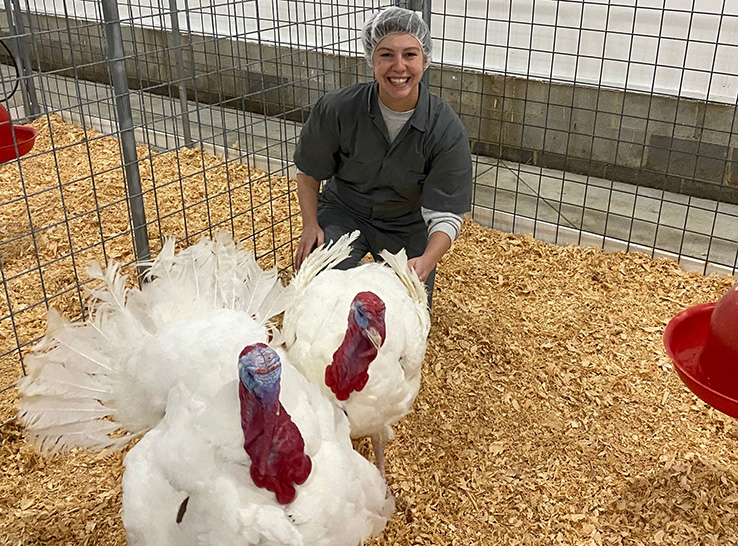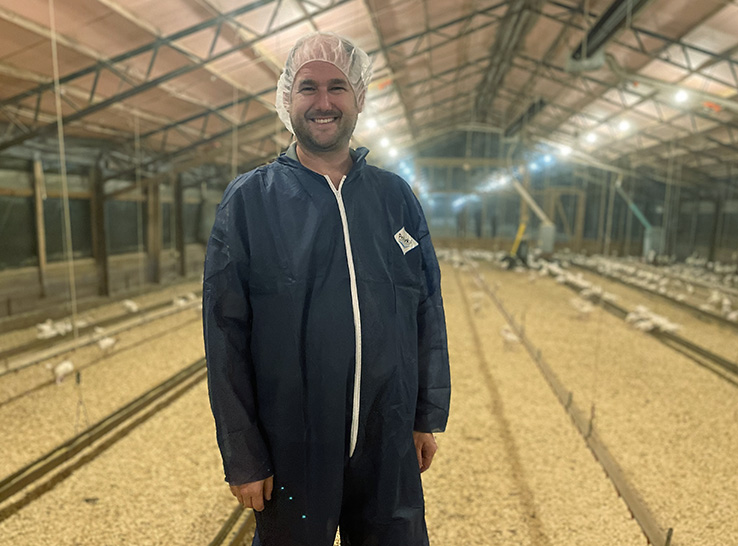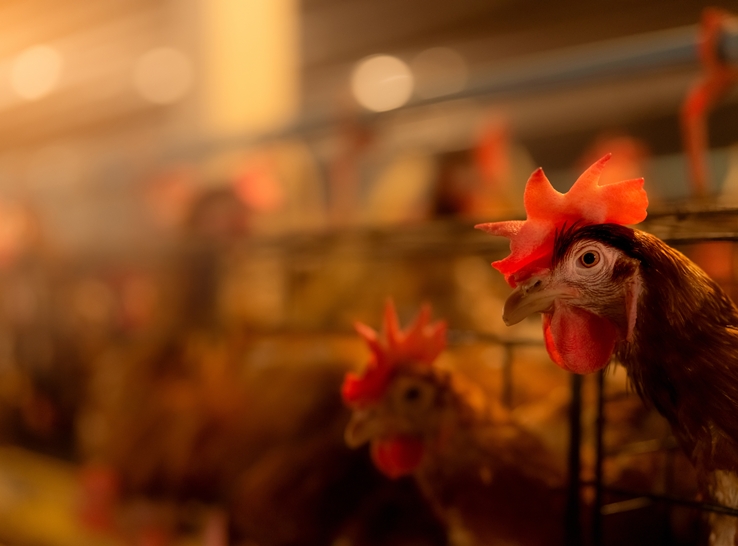By Allison N. Pullin, PhD
Assistant Professor of Animal Welfare
Prestage Department of Poultry Science
North Carolina State University
Raleigh, NC
Raising poultry without antibiotics helps producers respond to consumer concerns about antibiotic resistance, but what has not been thoroughly addressed is the welfare of birds raised in these systems.
Consider the results of a US study indicating that broilers raised without antibiotics have a greater incidence of eye burns, footpad lesions and airsacculitis compared with broilers given either nonmedically important or medically important antibiotics. All three of these conditions are associated with poor gut health that leads to saturated litter and, in turn, elevated ammonia levels and an elevated risk of bacterial infection.1
The authors point out that the results stand in contrast to existing research demonstrating that consumers purchase poultry raised without antibiotics (RWA) because they believe that it promotes healthier animals.
In a Canadian study comparing conventional and drug-free rearing programs on commercial farms, investigators found a higher incidence of necrotic enteritis outbreaks, increased litter moisture content, a higher feed conversion ratio and reduced live weight on the drug-free farms.2 While these studies acknowledge limitations of their datasets and conclusions, they indicate there are animal welfare challenges in RWA systems.
Pressure on veterinarians, producers
When RWA flocks experience disease outbreaks, veterinarians and poultry producers are faced with difficult treatment decisions that make it difficult to balance animal welfare with program marketing requirements. I have had personal communications with veterinarians who feel pressured by these challenges, which are further reflected by the results of a 2019 survey.3
Respondents to that survey included over 90 US veterinarians and producers from the RWA broiler and turkey segments of the poultry industry. The vast majority of them believed RWA production system slightly or significantly worsened animal health and welfare compared to conventional production. Additionally, the majority of poultry respondents (58% broiler, 91% turkey) agreed there are times when maintaining the RWA label requirements take priority over flock health and welfare.
Ethical, economic implications
The survey results also indicated the top reasons for utilizing RWA poultry production were not to promote animal welfare, but rather to fulfill a customer request, gain market entry into a retail program and/or increase sales price of the product. If RWA animals are treated with antibiotics, they must be diverted to a different market and incur economic risk. Therefore, veterinarians and producers are faced with enormous ethical and economic implications when deciding on a flock treatment plan.
The pressure for treatment decisions needs to be shifted away from individual veterinarians and producers. Instead, companies and the industry at-large need to develop guidelines for decision-making about treatment plans for RWA flocks. Veterinarians and company management could work together to draft internal comprehensive animal care and treatment plans regarding the best disease prevention practices; there could be decision trees with steps to follow and welfare metrics to evaluate when health challenges occur.
Treatment thresholds
Key components of a decision tree would be morbidity and mortality thresholds for implementing treatment plans in order to minimize animal suffering. One threshold may initiate the use of non-antibiotic treatment as a first step and if that’s unsuccessful, a second threshold may initiate antibiotic treatment plans to safeguard animal welfare.
Routinely monitoring key animal welfare indicators is also an integral part of any comprehensive care plan. Increasing the frequency and robustness of internal animal welfare auditing in RWA programs were needs identified by respondents in that 2019 survey.4
More broadly, industry guidelines could ensure consistency and support for field veterinarians on a larger scale. For example, the American Association of Avian Pathologists (AAAP) produced a thorough guide for the judicious use of antimicrobials in poultry. While the guide contains information regarding disease prevention and antimicrobial treatment strategies, specific considerations for RWA programs are not addressed.
Basic foundation needed
Developing a guide endorsed by AAAP and the American Veterinary Medical Association could be useful for the industry. More simply, a position statement about the AAAP’s stance on treatment practices in RWA programs may be a good strategy toward establishing a basic foundation for companies to look to as they evaluate their programs.
For example, the American Association of Swine Veterinarians released a position statement about raising pigs without antibiotics; they emphasized the importance of timely treatment and euthanasia to mitigate pain and distress and encouraged establishment of an alternative marketing program for animals that are treated.
Since the majority of US chicken is raised in RWA programs, it’s critical to have broader dialogue about promoting animal welfare in these systems, particularly in terms of timely treatment should disease outbreak occur. Because the decisions surrounding treatment have major ethical and economic implications, key players across the industry need to work together to guide the development of comprehensive animal care and timely treatment protocols for RWA programs.
1 Karavolias J, Salois MJ, Baker KT, Watkins K. 2018. Raised without antibiotics: Impact on animal welfare and implications for food policy. Translational Animal Science 2.4:337-348, doi: 10.1093/tas/txy016.
2 Gaucher ML, Quessy S, Letellier A, Arsenault J, Boulianne M. 2015. Impact of a drug-free program on broiler chicken growth performances, gut health, Clostridium perfringens and Campylobacter jejuni occurrences at the farm level. Poultry Science 94:1791-1801. doi: 10.3382/ps/pev142.
3 Singer RS, Porter LJ, Thomson DU, Gage M, Beaudoin A, Wishnie JK. 2019. Raising animals without antibiotics: U.S. producer and veterinarian experiences and opinions. Frontiers in Veterinary Science 6. doi: 10.3389/fvets.2019.00452.
4 Ibid.
Editor’s note: The opinions and/or recommendations presented in this article belong to the author and are not necessarily shared by Modern Poultry.







